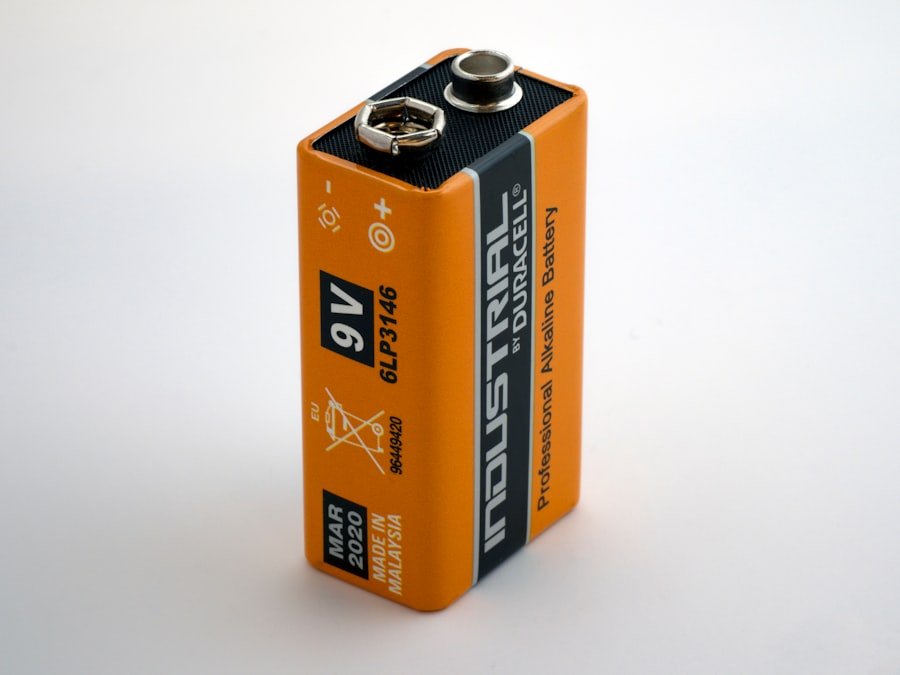The car battery is a critical component of any vehicle, serving as the primary source of electrical energy needed to start the engine and power various electrical systems. Over time, batteries can lose their ability to hold a charge due to age, environmental factors, or excessive use. Regular testing of the car battery is essential to ensure that it remains in good working condition and to prevent unexpected breakdowns.
One of the most effective tools for testing a car battery is a multimeter, which can provide valuable insights into the battery’s health and performance. Using a multimeter to test a car battery is a straightforward process that can be performed by anyone with basic knowledge of electrical systems. This article will guide you through the steps necessary to accurately test your car battery using a multimeter, interpret the results, and perform additional tests that can help diagnose potential issues.
By understanding how to use this tool effectively, you can take proactive measures to maintain your vehicle’s battery and ensure reliable performance.
Key Takeaways
- Testing car battery with a multimeter is a simple and effective way to ensure its health and performance.
- Understanding the functions of a multimeter is crucial for accurate testing and interpretation of results.
- Before testing, it is important to prepare the car battery by ensuring it is clean and free of any corrosion.
- Setting up the multimeter for testing involves selecting the appropriate voltage range and connecting the probes correctly.
- Testing the voltage of the car battery will provide valuable information about its current state and potential issues.
Understanding the Multimeter and its Functions
A multimeter is an essential instrument for anyone working with electrical systems, including automotive applications. It combines several measurement functions into one device, allowing users to measure voltage, current, and resistance. The versatility of a multimeter makes it an invaluable tool for diagnosing electrical problems in vehicles, as it can provide precise readings that help identify issues with the battery, alternator, and other components.
When it comes to testing a car battery, the most relevant function of a multimeter is its ability to measure voltage. A digital multimeter (DMM) is particularly user-friendly, displaying readings on an LCD screen that is easy to read. In addition to voltage measurements, many multimeters also offer features such as continuity testing and diode testing, which can be useful for troubleshooting electrical circuits in the vehicle.
Understanding how to navigate the various settings and functions of your multimeter is crucial for accurate testing and diagnosis.
Preparing the Car Battery for Testing

Before testing the car battery with a multimeter, it is important to prepare both the battery and the testing environment. Start by ensuring that the vehicle is parked in a well-ventilated area, as batteries can emit harmful gases during charging or discharging. Additionally, make sure that the engine is turned off and that all electrical accessories are switched off to obtain an accurate reading. Next, inspect the battery terminals for any signs of corrosion or dirt buildup.
Corroded terminals can lead to inaccurate readings and hinder the battery’s performance. If you notice any corrosion, clean the terminals using a mixture of baking soda and water, applying it with a wire brush or cloth. After cleaning, rinse the terminals with water and dry them thoroughly before proceeding with the test.
Proper preparation not only ensures accurate results but also promotes safety during the testing process.
Setting up the Multimeter for Testing
| Measurement | Setting |
|---|---|
| Voltage | Set the dial to the V with a straight line symbol for DC voltage or the V with a wavy line symbol for AC voltage |
| Current | Set the dial to the A with a straight line symbol for DC current or the A with a wavy line symbol for AC current |
| Resistance | Set the dial to the Ω symbol |
| Continuity | Set the dial to the sound wave symbol or diode symbol |
Once the car battery is prepared for testing, it’s time to set up the multimeter. Begin by selecting the appropriate measurement mode on your multimeter. For testing a car battery’s voltage, you will want to set the multimeter to the DC voltage setting, typically indicated by a “V” with a straight line and dashed line beneath it.
Most car batteries operate at 12 volts, so ensure that your multimeter is set to a range that includes this value. Next, connect the multimeter probes to the battery terminals. The red probe should be connected to the positive terminal (usually marked with a “+” sign), while the black probe should be connected to the negative terminal (marked with a “-” sign).
It is crucial to ensure that these connections are secure and that you do not touch the metal parts of the probes while they are connected to avoid any risk of electric shock or short-circuiting.
Testing the Voltage of the Car Battery
With the multimeter set up and connected to the battery terminals, you can now proceed to test the voltage of the car battery. Observe the reading displayed on the multimeter; a healthy car battery should typically show a voltage between 12.4 and 12.
If your reading falls within this range, it indicates that your battery is in good condition and capable of holding a charge.
If the voltage reading is below 12.4 volts, it may suggest that the battery is partially discharged or experiencing issues. A reading below 12 volts indicates that the battery is significantly discharged and may require charging or replacement. In some cases, if you suspect that the battery is faulty or nearing the end of its lifespan, it may be beneficial to perform additional tests or consult with a professional mechanic for further evaluation.
Interpreting the Results and Identifying Issues

Interpreting the results from your multimeter test is crucial for understanding your car battery’s health. As previously mentioned, a reading between 12.4 and 12.7 volts indicates a healthy battery. However, if your reading falls below this range, it’s essential to consider potential causes for this drop in voltage.
A common reason for low voltage could be that the vehicle has not been driven for an extended period, leading to natural discharge. If you find that your battery voltage is consistently low even after charging, it may indicate that there are underlying issues such as sulfation or internal short circuits within the battery cells. In such cases, further investigation is warranted.
You might want to check for parasitic drains—electrical components that continue drawing power even when the vehicle is off—or inspect the alternator’s performance since it plays a vital role in recharging the battery while driving.
Additional Tests to Perform with the Multimeter
Beyond simply measuring voltage, there are additional tests you can perform with your multimeter to gain deeper insights into your car battery’s condition. One such test is a load test, which assesses how well your battery performs under load conditions similar to those experienced during engine start-up. To conduct this test, you will need a load tester; however, some advanced multimeters come equipped with load-testing capabilities.
To perform a load test using a multimeter, apply a load equivalent to half of your battery’s cold cranking amps (CCA) rating for about 15 seconds while monitoring the voltage drop on your multimeter. A healthy battery should maintain a voltage above 9.6 volts during this test; if it drops significantly below this threshold, it may indicate that your battery is weak or failing. Another useful test involves checking for continuity in your battery cables and connections using your multimeter’s continuity setting.
This test helps identify any breaks or high-resistance points in your wiring that could affect performance. Simply place one probe on one end of the cable and the other probe on the opposite end; if your multimeter beeps or shows continuity, then your cable is functioning properly.
Maintenance Tips for Keeping Your Car Battery in Good Condition
Maintaining your car battery in good condition requires regular attention and care. One of the most effective ways to prolong your battery’s lifespan is by ensuring that it remains clean and free from corrosion. Regularly inspect and clean your battery terminals as needed; applying a thin layer of petroleum jelly or terminal protector can help prevent future corrosion.
Additionally, consider checking your battery’s fluid levels if you have a traditional lead-acid battery. Low fluid levels can lead to overheating and damage; if necessary, top off with distilled water—never tap water—to maintain optimal performance. Furthermore, it’s advisable to keep your vehicle charged by driving regularly or using a trickle charger if it will be parked for an extended period.
Lastly, be mindful of extreme temperatures as they can significantly impact battery performance. In colder climates, batteries can lose their charge more quickly; conversely, excessive heat can accelerate chemical reactions within the battery leading to premature failure. Parking in shaded areas during hot weather or using thermal insulation can help mitigate these effects and extend your battery’s life.
By following these guidelines and utilizing your multimeter effectively, you can ensure that your car battery remains in optimal condition for reliable performance on the road.
If you’re interested in learning more about DIY projects, you may also want to check out this beginner’s guide on how to paint a room. This article provides step-by-step instructions and tips for achieving a professional-looking paint job in your home. It’s a great resource for anyone looking to tackle a home improvement project.
FAQs
What is a multimeter?
A multimeter is a tool used to measure electrical properties such as voltage, current, and resistance in an electrical circuit.
Why should I test my car battery with a multimeter?
Testing your car battery with a multimeter can help you determine its current state of charge and overall health. This can help prevent unexpected breakdowns and identify when it’s time to replace the battery.
How do I test my car battery with a multimeter?
To test your car battery with a multimeter, set the multimeter to the DC voltage setting, connect the red probe to the positive terminal of the battery and the black probe to the negative terminal, and then read the voltage displayed on the multimeter.
What voltage reading indicates a healthy car battery?
A healthy car battery should read around 12.6 volts when the engine is off. If the engine is running, the voltage reading should be between 13.7 and 14.7 volts, indicating that the alternator is charging the battery properly.
What voltage reading indicates a weak or dead car battery?
A voltage reading of 12.4 volts or lower when the engine is off indicates a weak or dead car battery that may need to be recharged or replaced.

